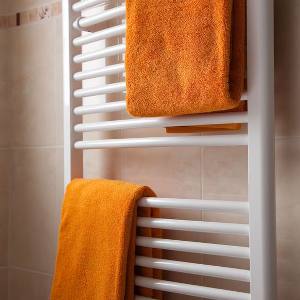Choose the right bathroom heating for your home
Index
There’s nothing quite like an hydronic radiator to heat a bathroom. The circulation of hot water through metal produces radiant warmth that is hard to beat.

With the rise of central heating and new trends such as floor heating, is there still a place for a radiator in the bathroom? According to heating installer Zac Williams, the answer is yes. "There’s no dust, no air circulation, there’s just warmth that radiates in the room," he says. "Bathroom radiators take the moisture out of the air, dry all your towels and take the chill off the room as well."
Because there’s no movement of air, bathroom radiators are great for people with allergies, and they are also completely silent. And because most modern bathroom radiators use recirculated hot water, known as hydronic heating, they are incredibly efficient. Heating an entire home hydronically costs around two-thirds the price of gas heating, although it is more expensive to install.
The style of older bathroom radiators has long given way to sleek, streamlined designs. Panel radiators are now usually enclosed, with a cover over the individual ‘fins’, and are smoother and more rounded. They come in almost any size and shape you can imagine, even floor-to-ceiling vertical panels that can be painted to match your bathroom decor.
Particularly popular among bathroom radiators at the moment are heated towel rails, says heating retailer Phil Randall. "Heated towel rails are available in different sizes and shapes, and you can place your towels overthem so it warms and dries them while heating the bathroom at the same time," he says. They come in a range of styles and designs, from the classic white to the more contemporary chrome heated towel rail, and can be tailored to fit almost any size of bathroom, though generally only the larger models are capable of heating both room and towels. Zac says that electric heated towel rails are popular because not many people have a hydronic heating installation. "It’s sort of a niche market because of the expense that’s involved in installing a domestic hydronic system," says Zac. "You probably wouldn’t do it for just one room; you’d get an electric version instead."
